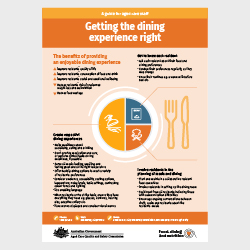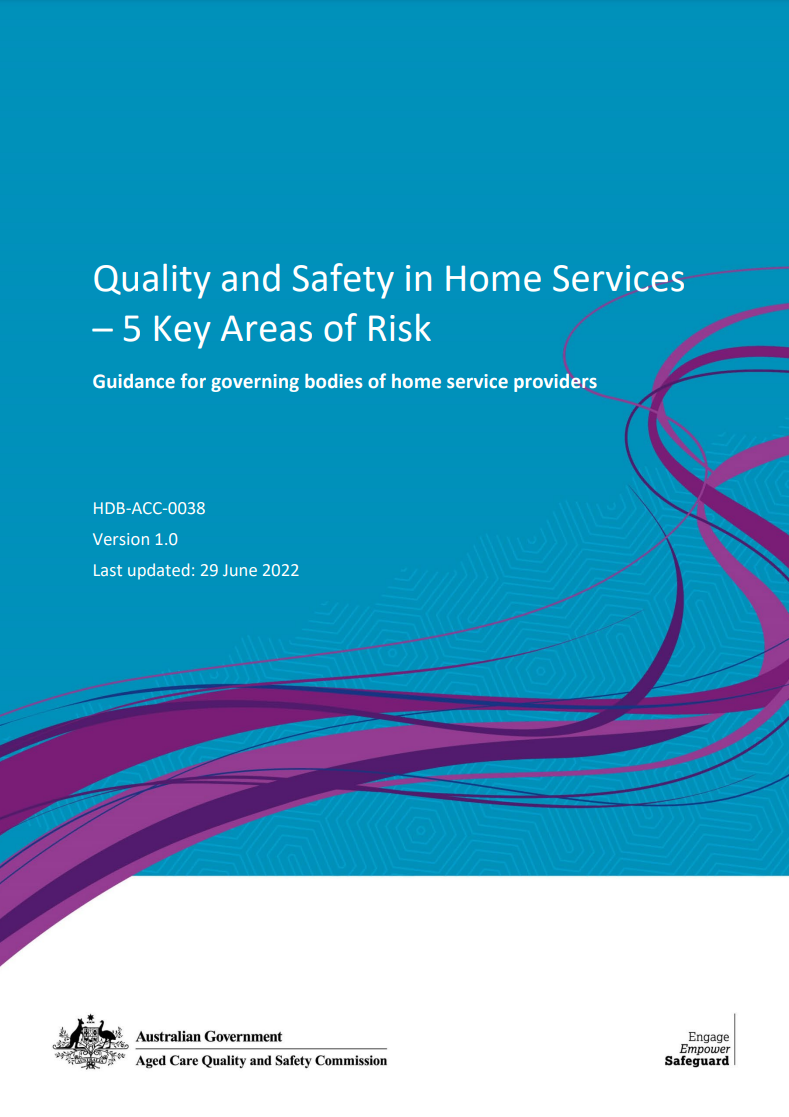This resource is a goal planning tool designed to support aged care providers in improving food, dining, nutrition, and consumer choice. It helps providers set objectives, track progress, and implement actions to enhance service quality, ensuring that people’s preferences and dietary needs are consistently met. This resource may refer to information that will be updated from 1 July 2025 to align with the new Aged Care Act and Quality Standards.

On Wednesday 31 August, the Aged Care Quality and Safety Commissioner, Ms Janet Anderson, PSM, sent a letter to approved providers regarding the national aged care reforms.

On Wednesday 31 August, the Aged Care Quality and Safety Commissioner, Ms Janet Anderson, PSM, sent a letter to consumers regarding the national aged care reforms.

On Friday 26 August, the Aged Care Quality and Safety Commissioner, Ms Janet Anderson, PSM, sent a letter to approved providers regarding the SCHADS Award.

This fact sheet helps aged care residents communicate their food and dining preferences. It includes sections for meal choices, dining preferences, assistance needs, health considerations, cultural or religious customs, and contact information for allied health professionals. It also advises staff to monitor changes in weight and contact a dietitian if needed.
This resource may refer to information that will be updated from 1 July 2025 to align with the new Aged Care Act and Quality Standards.

This poster is a guide for aged care residents about what you should expect from your provider and dining team for an enjoyable meal and dining experience.

This fact sheet provides practical tips for enhancing dining experiences in residential aged care settings. It offers guidance on food presentation, meal assistance, creating a respectful and enjoyable atmosphere, supporting independence, and providing culturally appropriate dining options. The aim is to improve mealtime satisfaction while maintaining older peoples' dignity and people's preferences. This resource may refer to information that will be updated from 1 July 2025 to align with the new Aged Care Act and Quality Standards.

This poster is a guide for aged care staff about how to get the dining experience right for residents.

This poster is a guide for aged care staff about get to know residents so you can support them to have meaningful meal time experiences.

This poster for aged care staff sets out the 8 facts you need to know about the residents you support to:
- ensure residents receive nutritious and appealing meals they can eat
- notice early warning signs of decreased appetite and/or weight loss
- act early to prevent malnutrition.

This fact sheet outlines how providers can create an enjoyable dining experience for residents in aged care to support their consumption of meals, reduce risks of malnutrition and dehydration, and to meet the Aged Care Quality Standards.

This fact sheet outlines how residential aged care staff, including cooks, chefs, food service staff and care staff, can create an enjoyable dining experience to support residents to take pleasure in, and consume, their meals.

This fact sheet outlines what you and your care team can do to make your dining experience enjoyable.
The dining experience includes the food and drinks provided, the service you receive and the atmosphere. A good dining experience improves your wellbeing and increases your quality of life.

This resource provides guidance for home service providers on managing key risks in aged care services. It identifies 5 critical areas: organisational governance, care planning and assessment, clinical care, support for vulnerable consumers, and management of Home Care Package funds

This provider frequently asked questions responds to questions to the Commission about use of the psychotropic self-assessment tool in residential aged care services.








